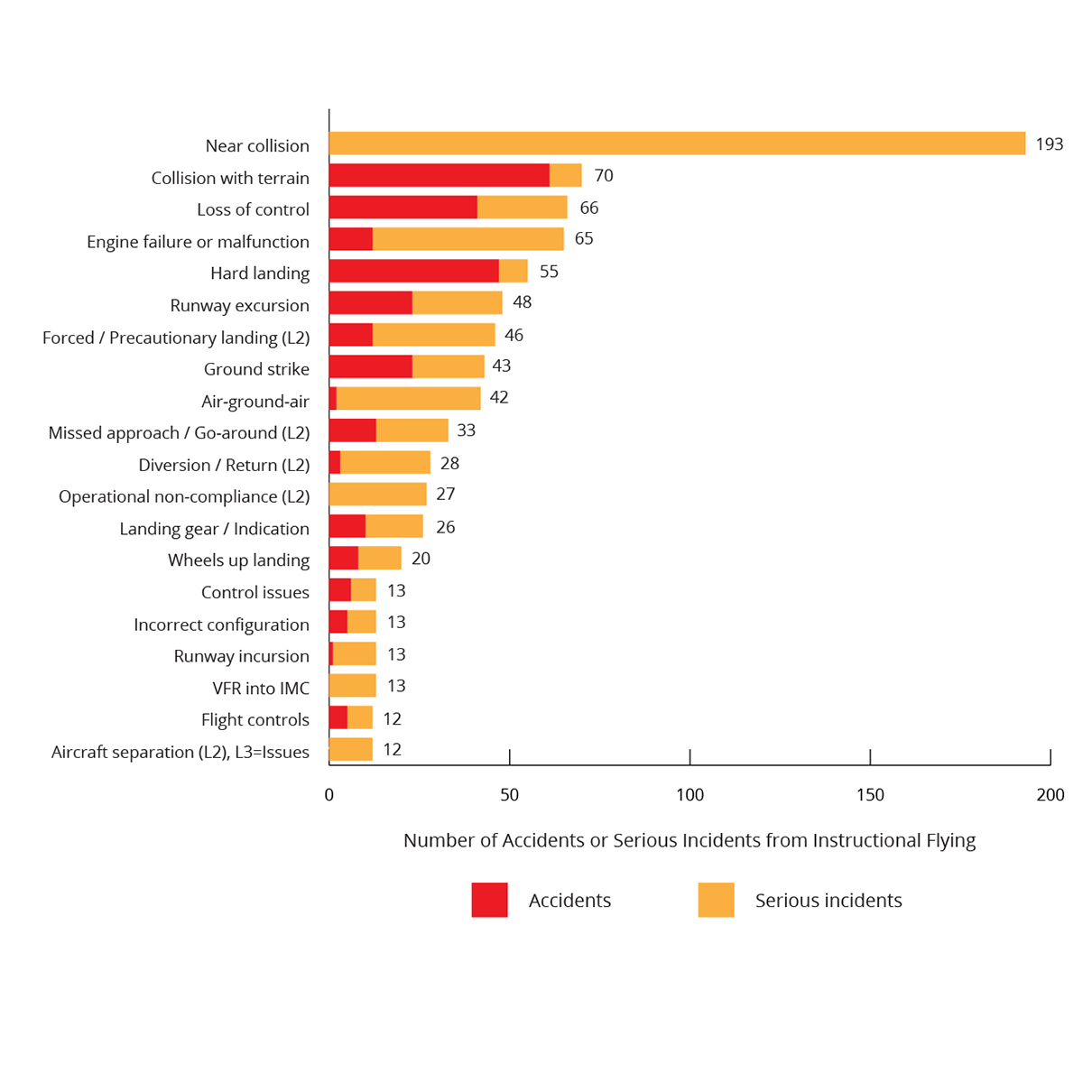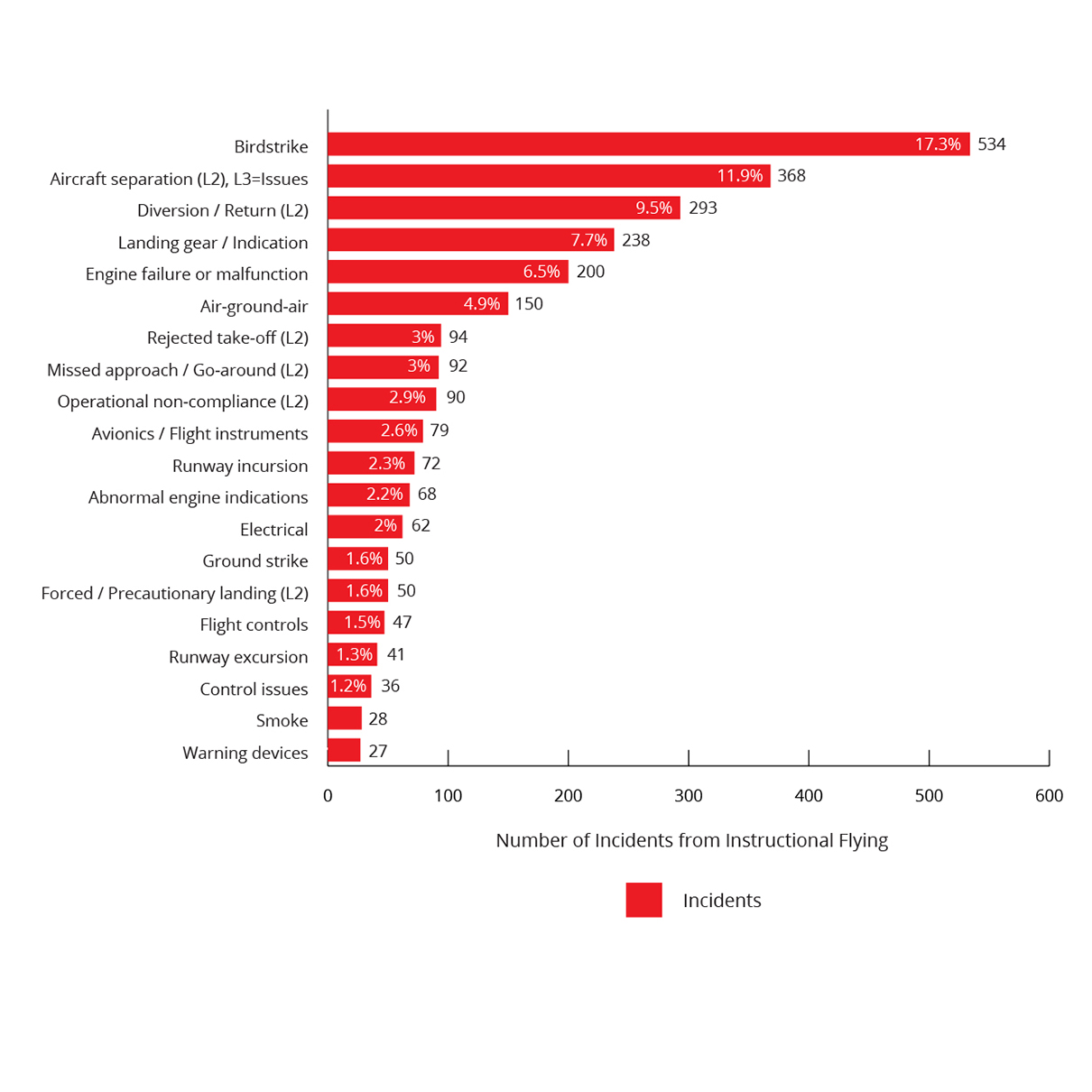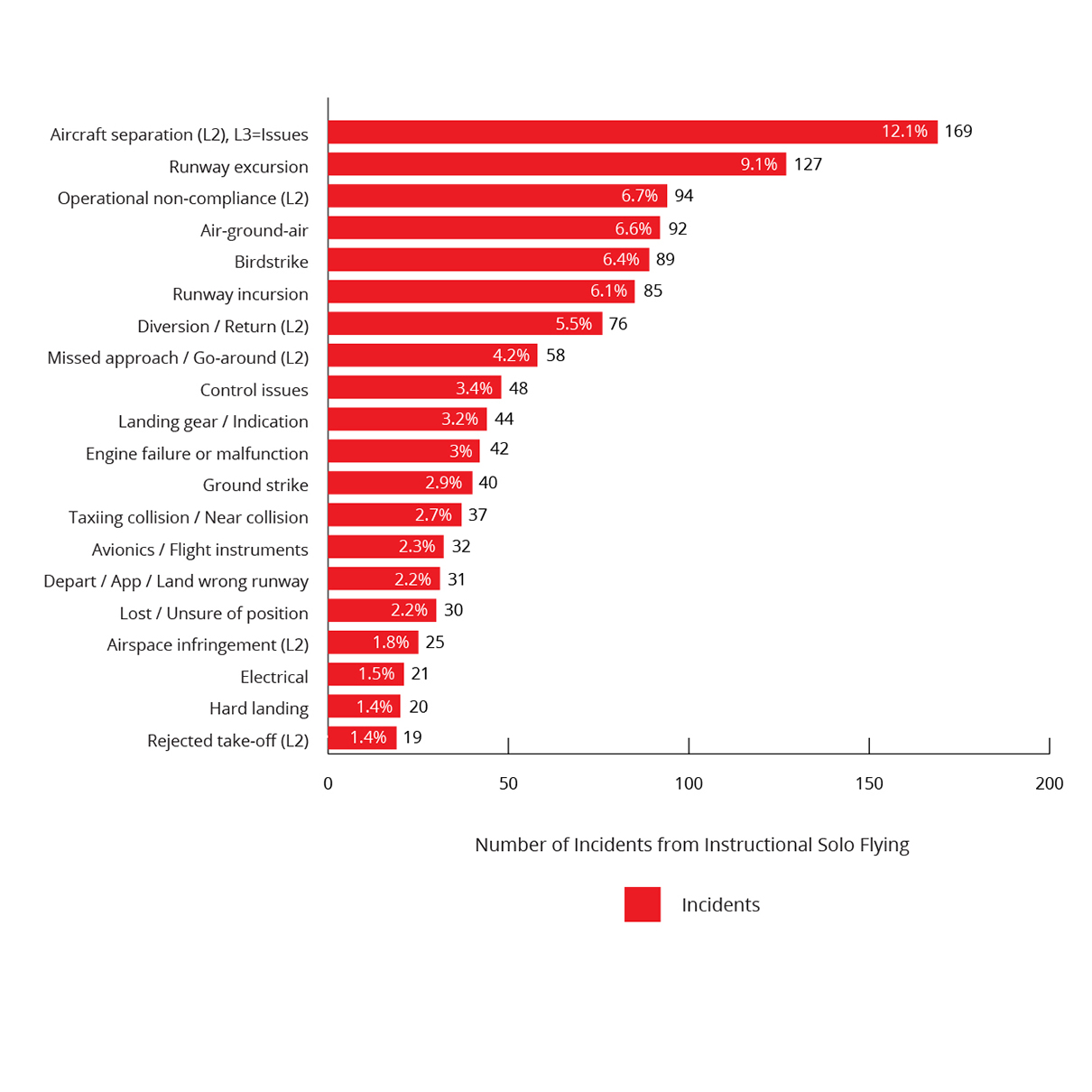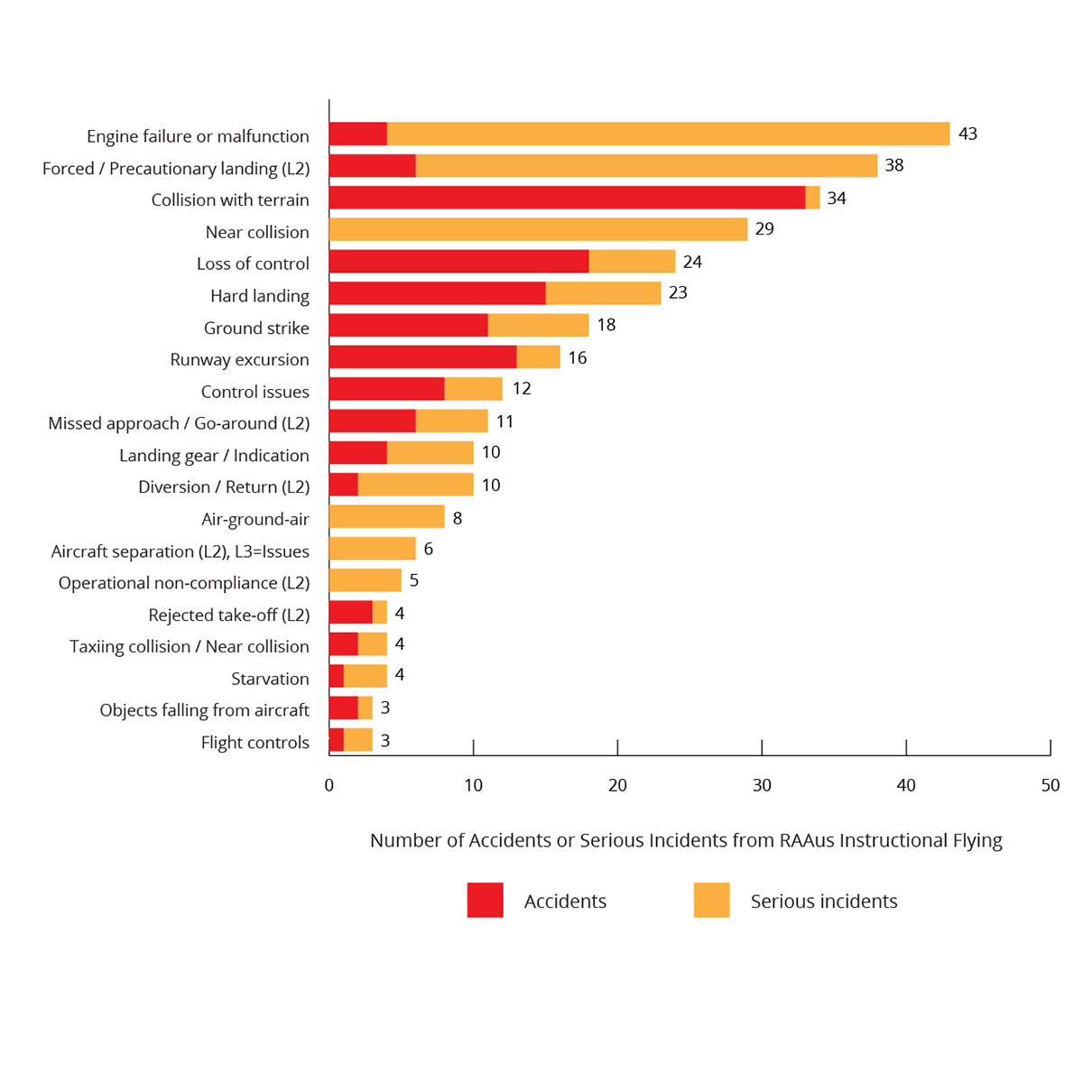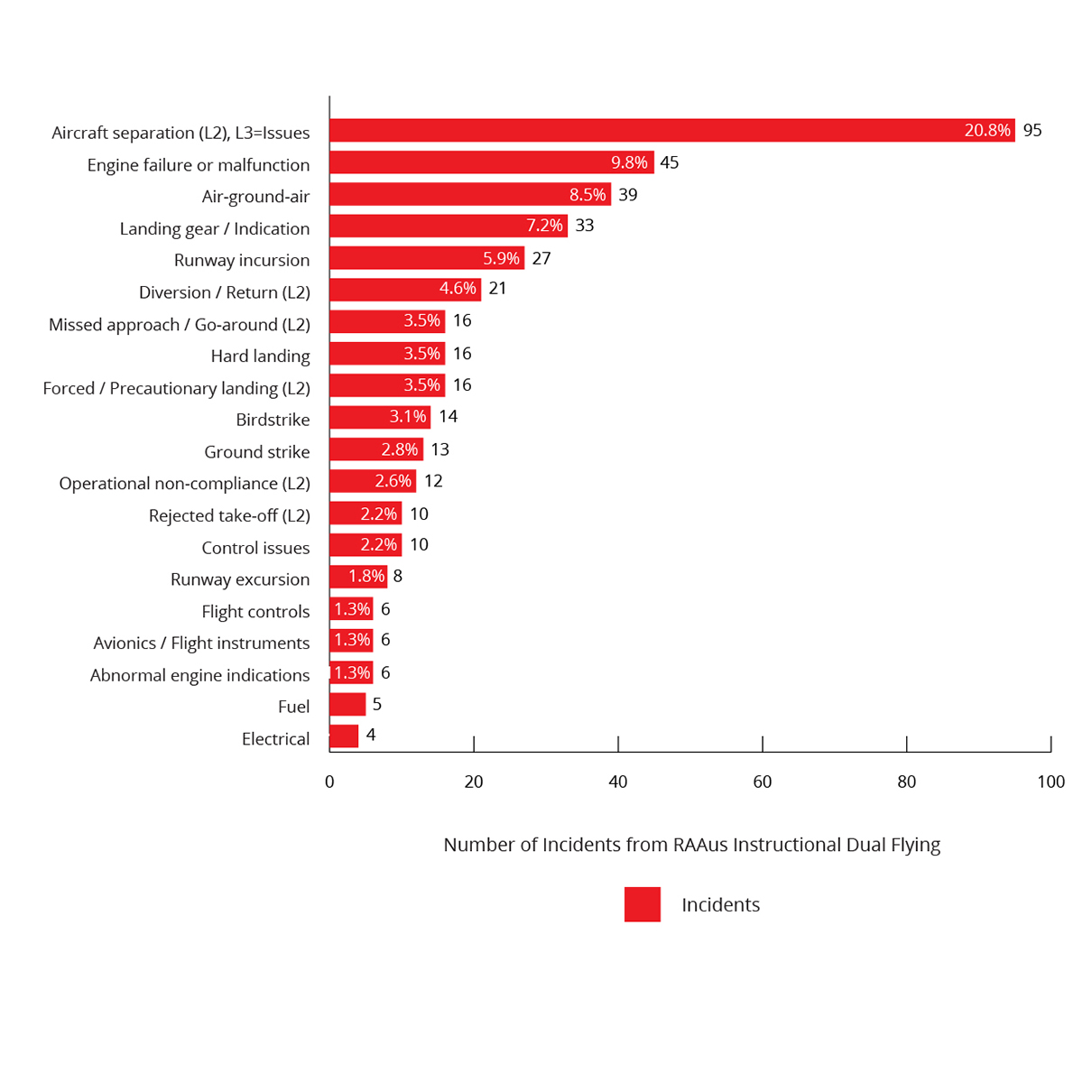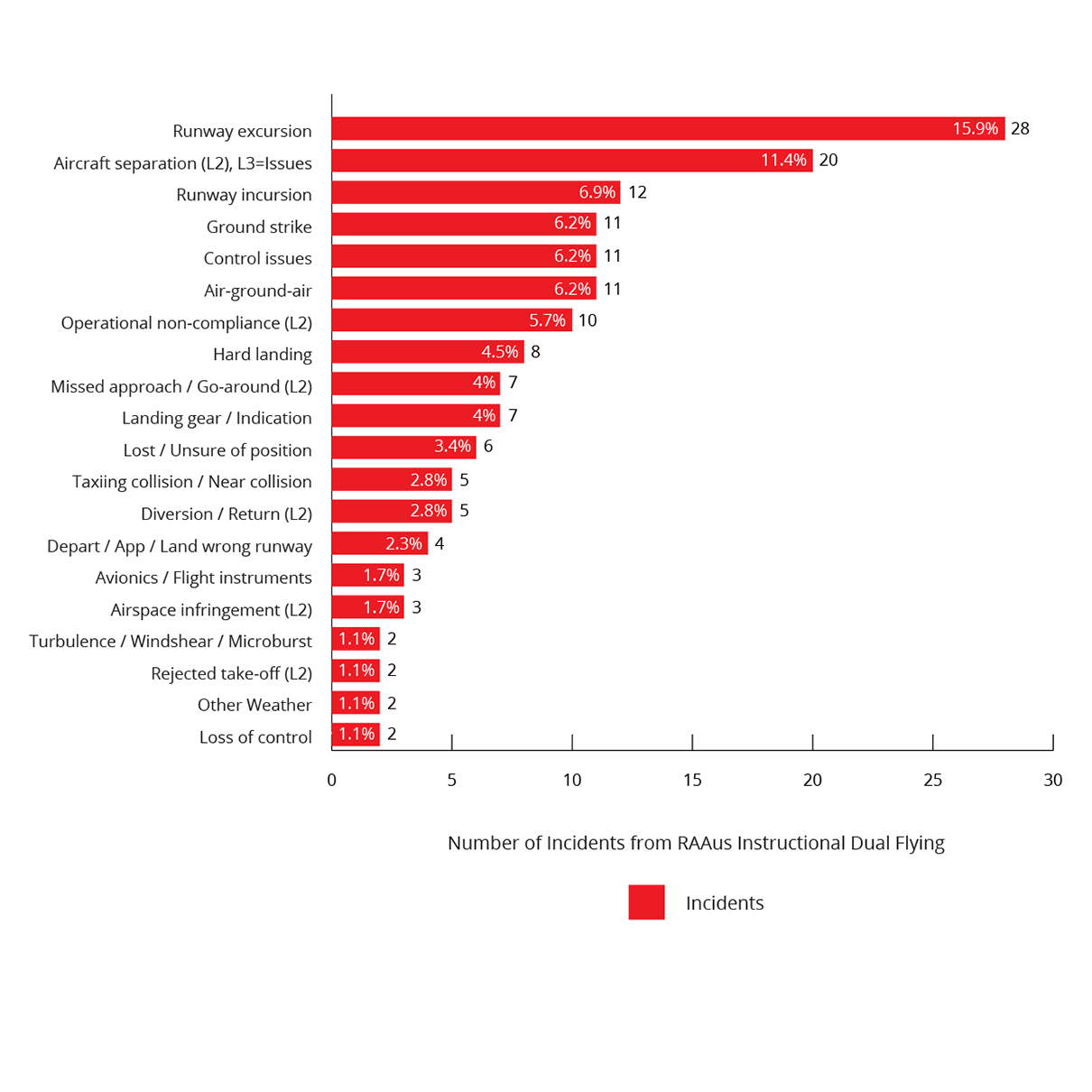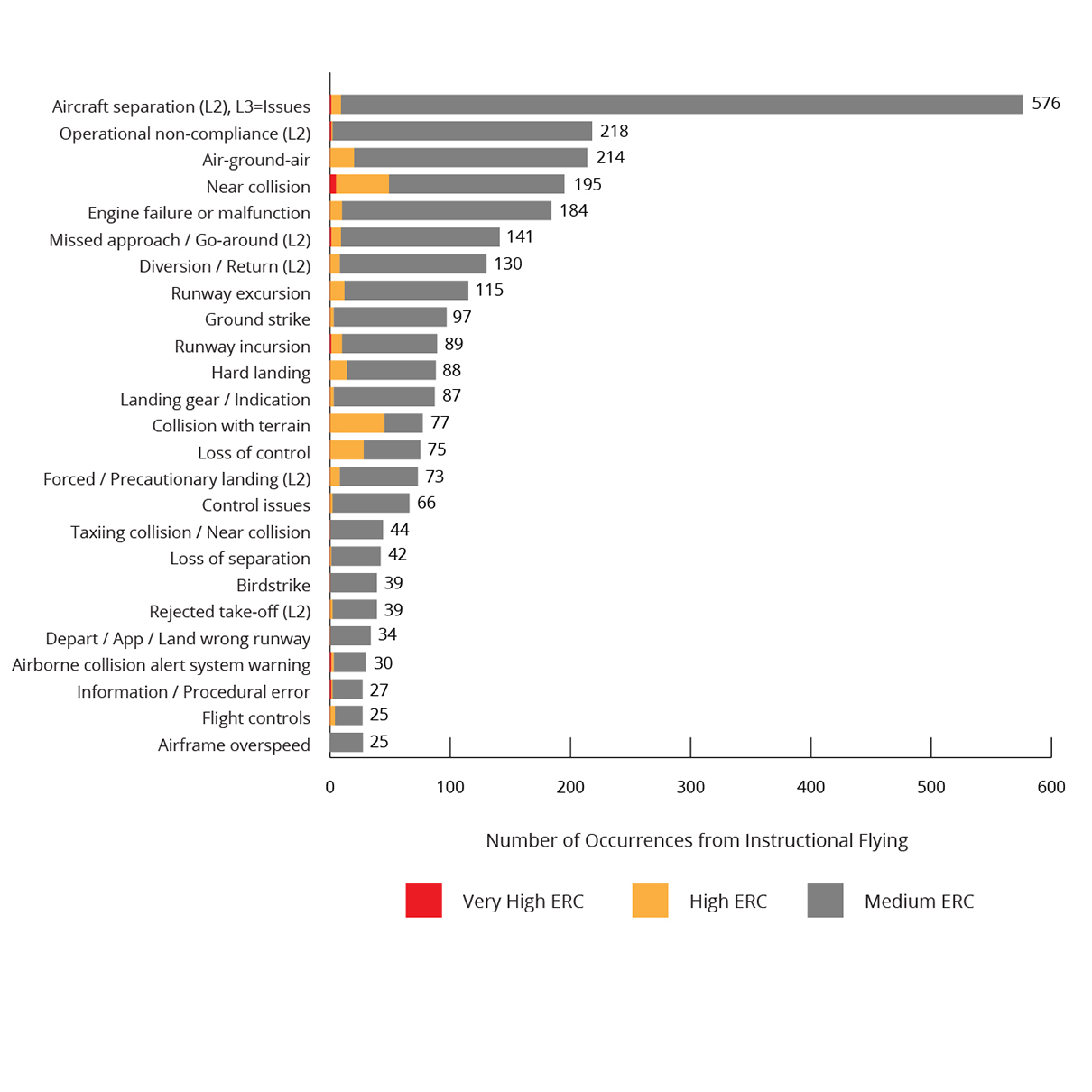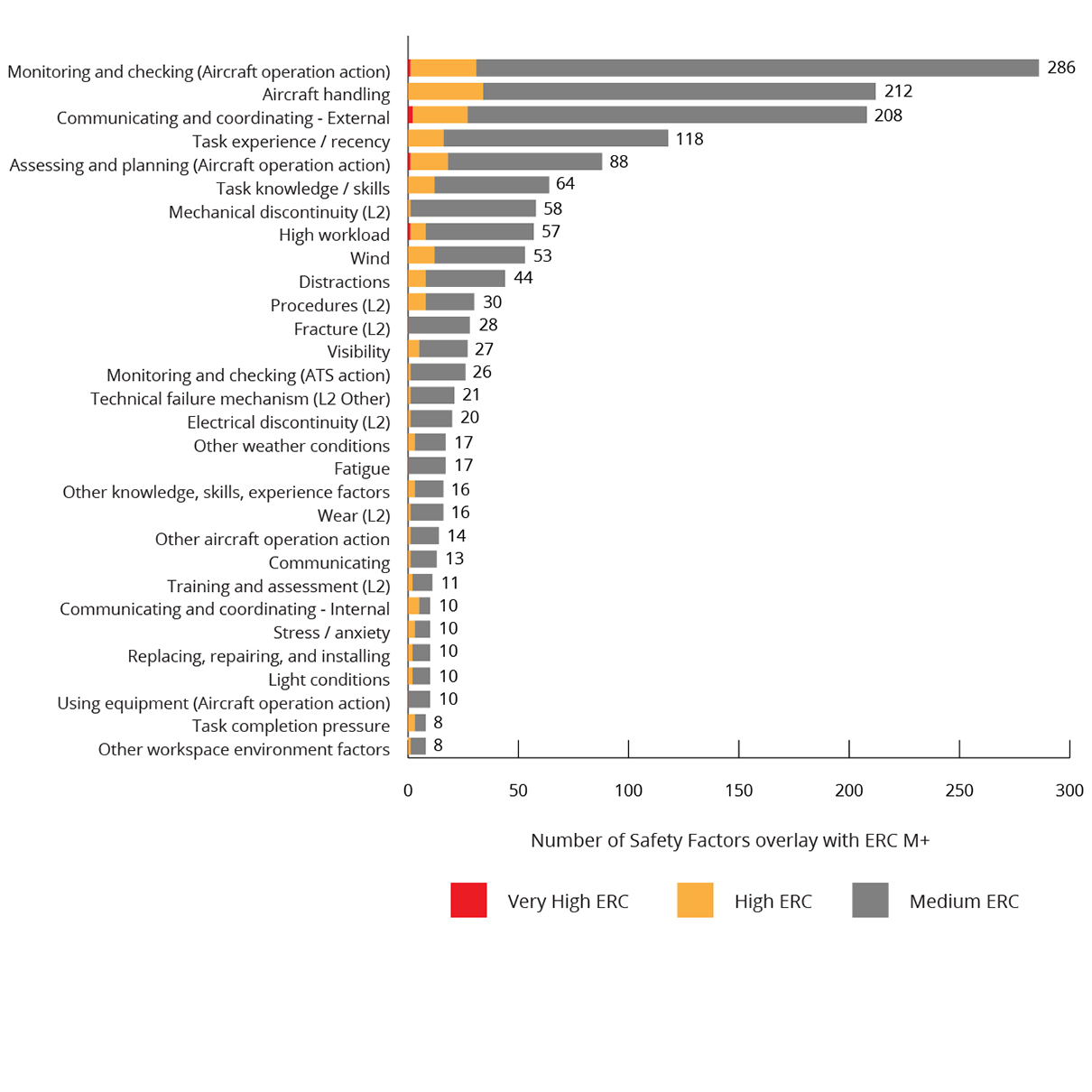The most common occurrence type for accidents and serious incidents over 10 years were:
- near collision: 193 serious incidents
- collision with terrain: 65 accidents and 5 serious incidents
- loss of control: 45 accidents and 21 serious incidents.
The top 3 taxonomies for dual instructional VH flights were:
- bird strikes: 534 incidents
- aircraft separation: 368 incidents
- diversion/return: 293 incidents.
The top 3 taxonomies for solo instructional VH flights were:
- aircraft separation: 169 incidents
- runway excursion: 127 incidents
- operational non-compliance: 94 incidents.
The most common occurrence type for accidents and serious incidents for instructional flying by RAAus aircraft over 10 years were:
- engine failure or malfunction: 3 accidents and 40 serious incidents
- forced/precautionary landing: 5 accidents and 33 serious incidents
- collision with terrain: 33 accidents and 1 serious incident.
The top 3 taxonomies for dual instructional RAAus flights were:
- aircraft separation: 95 incidents
- engine failure or malfunction: 45 incidents
- Air-ground-air: 39 incidents.
The top 3 taxonomies for solo instructional RAAus flights were:
- runway excursion : 28 incidents
- aircraft separation issues: 20 incidents
- runway incursion: 12 incidents.
Occurrence types – event risk classification
Studying ATSB’s event risk classification (ERC) for occurrences in the sector helps to gain further clarity on risk. ERC analysis shows higher safety risk from occurrences related to airspace conflicts such as aircraft separation.
Based on ERC classification the top 3 taxonomies are:
- aircraft separation issues
- operational non-compliance
- air-ground-air.
Safety factors
ATSB applies safety factors to certain occurrences to identify conditions or factors that contributed to the occurrence.
Safety factors are an event or condition that increases safety risks. This means it increases the likelihood of an occurrence or the consequences associated with an occurrence.


